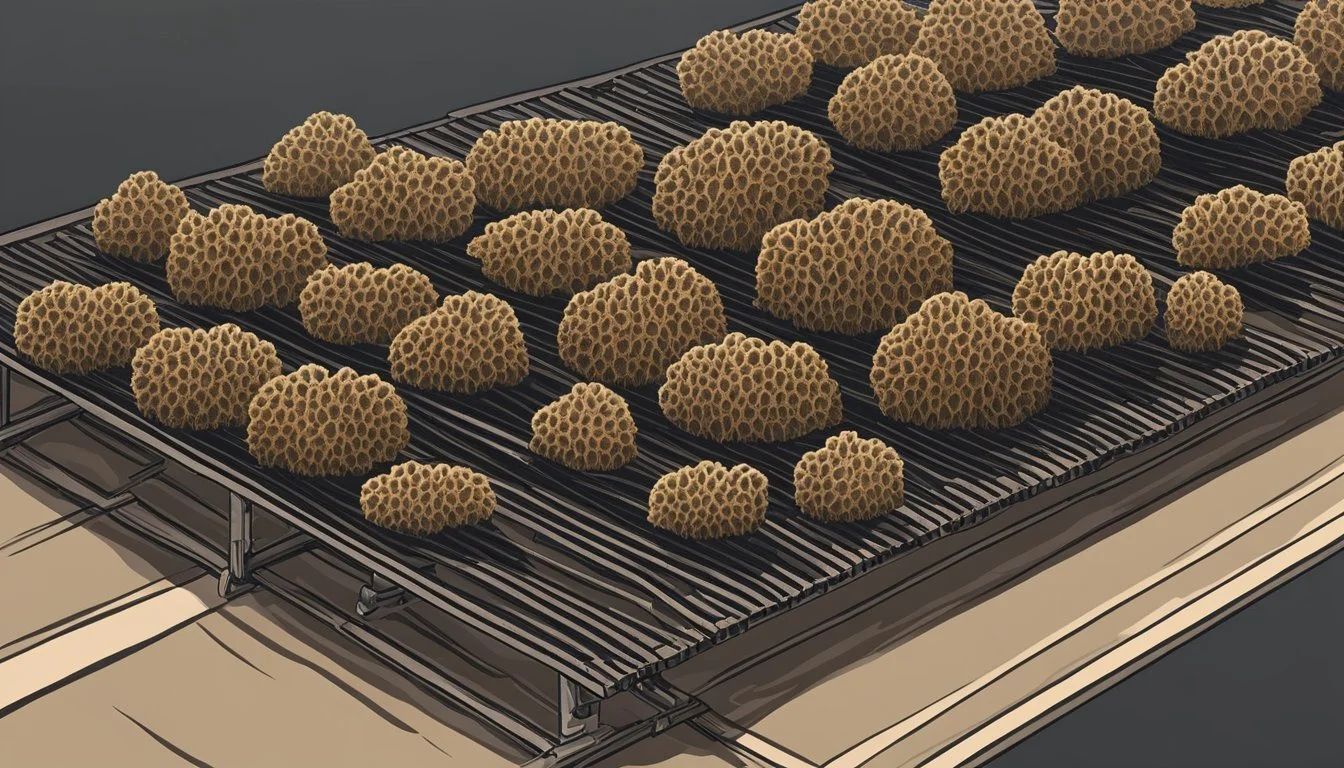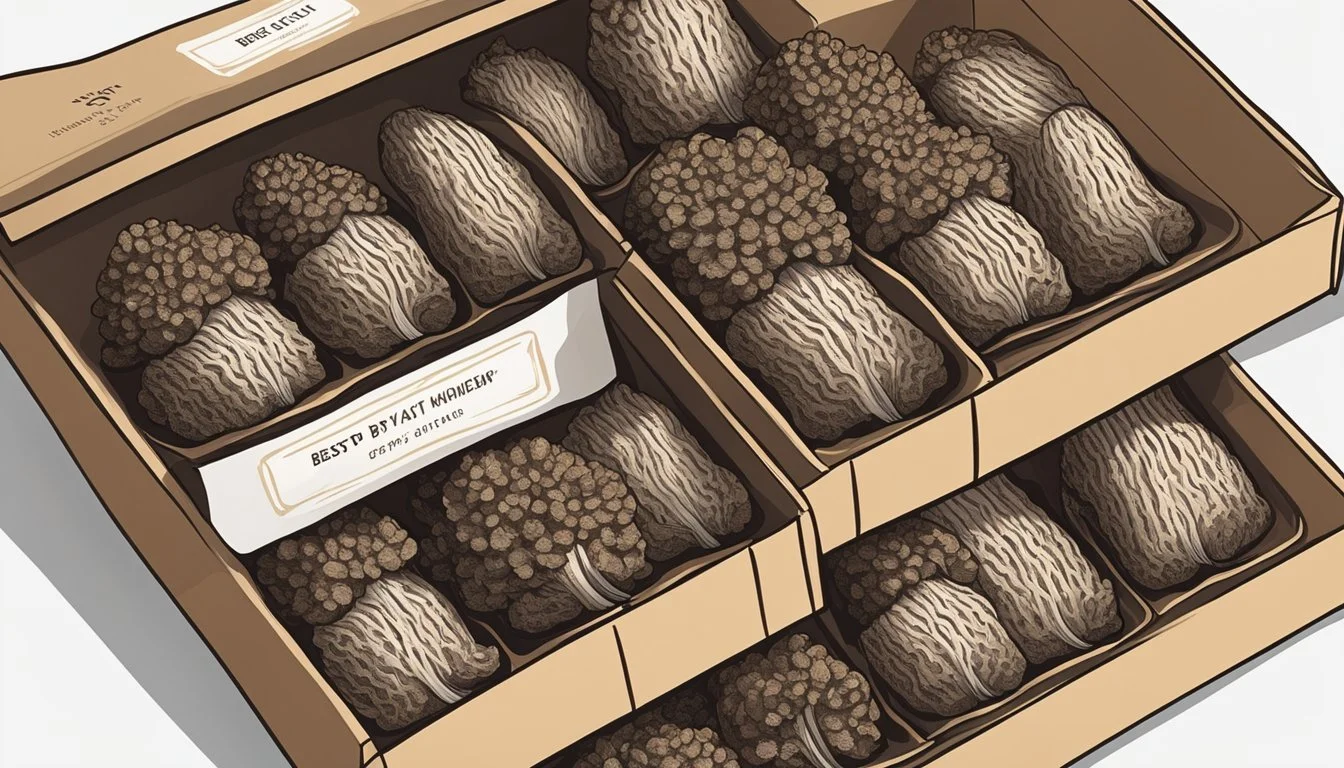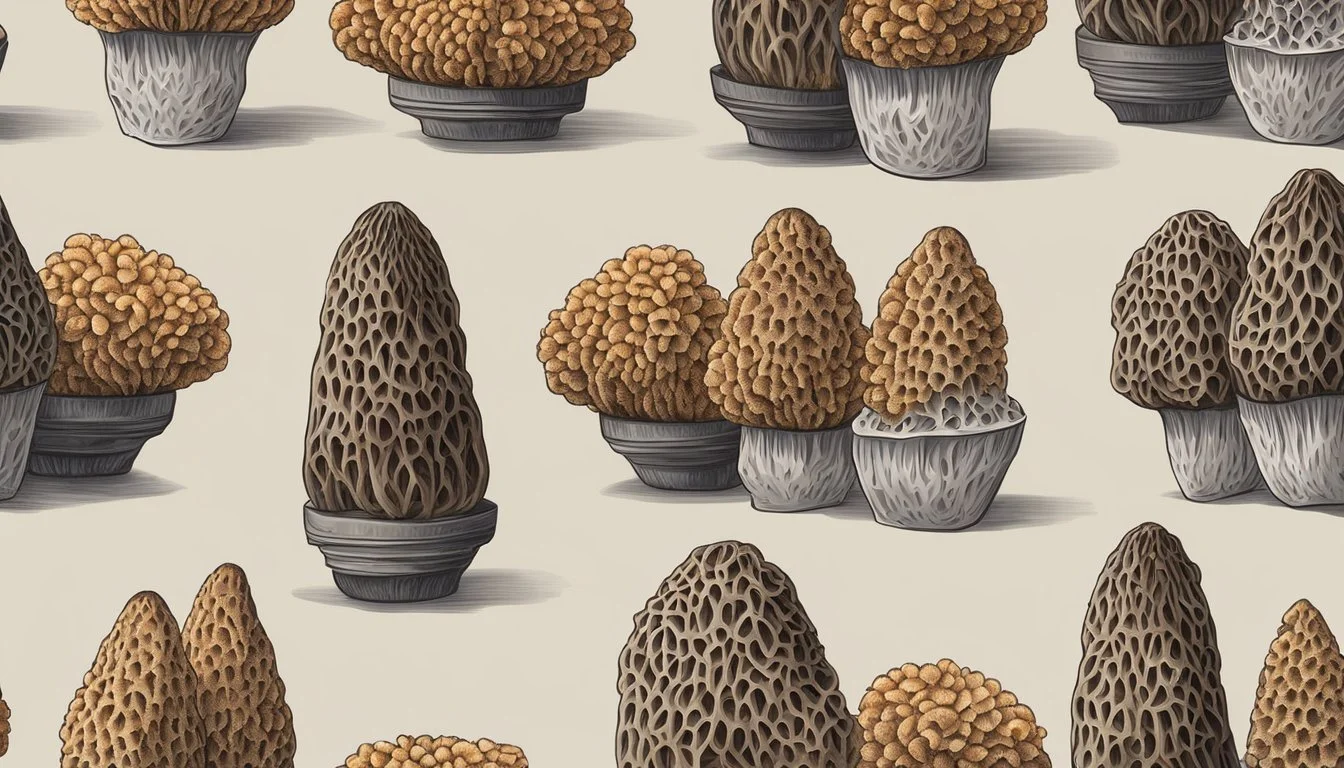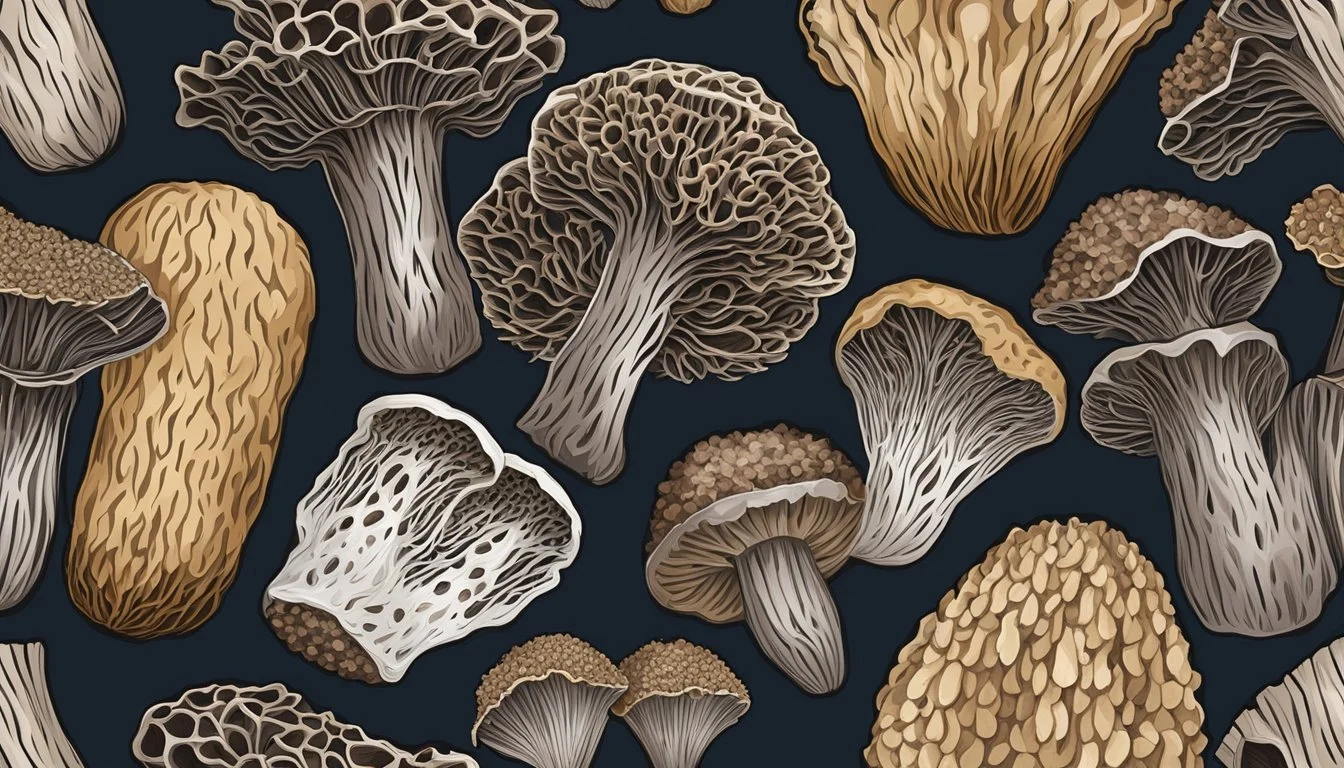How Long Do Dried Morel Mushrooms Last?
Understanding Their Shelf Life
Dried morel mushrooms are renowned for their rich and earthy flavor, making them a cherished ingredient among culinary enthusiasts. The preservation of these fungi is essential not only for extending their enjoyment beyond the brief spring foraging season but also for maintaining food safety standards. Properly dehydrated morel mushrooms have a significantly extended shelf life compared to their fresh counterparts, allowing them to be stored and used throughout the year.
The shelf life of dried morels is typically estimated to be between six to twelve months when stored correctly. To ensure maximum longevity, they should be kept in a sealed container placed in a cool, dry, and dark location. This method of storage helps in preserving their distinctive taste and texture.
In terms of food safety, it's crucial to maintain the quality of the dried morels during storage. Any presence of moisture can lead to spoilage and the potential development of harmful mold. Therefore, checking the mushrooms (What wine goes well with mushrooms?) for any signs of moisture or decay before use is advised. When ready to use, rehydrating the mushrooms in room temperature water for several hours reconstitutes their flavor and texture, making them ready for culinary use.
Understanding Morel Mushrooms
In pursuit of savory flavors and nutritional benefits, morel mushrooms captivate the palates and interests of vegans and gourmet enthusiasts alike. They stand out in the fungi kingdom for their unique characteristics and their rich, earthy flavor.
Characteristics of Morel Mushrooms
Morel mushrooms bear a distinctive appearance and taste that set them apart from other mushroom varieties. With a honeycomb-like surface on their cap, morels are easily recognizable. They grow in the wild during a short springtime window, often thriving in wooded areas of North America, particularly after a forest fire when the ground is rich with nutrients. The texture after cooking is prized for being meaty and tender, drawing in chefs and food lovers. They are sough-after for their earthy flavor and versatility in recipes.
Nutritional Profile
Morel mushrooms offer a notable nutritional profile that makes them a worthwhile addition to the diet. They are inherently low in fat and cholesterol, while being a good source of protein, making them a favored option for vegan diets. Below is a table outlining the key nutrients found in morel mushrooms:
Nutrient Benefit Protein Contributes to muscle repair and growth Vitamin D Supports bone health and immune function Iron Essential for blood production and energy levels Fiber Aids in digestive health Antioxidants May reduce the risk of chronic diseases
Though their availability is limited, morel mushrooms can be dehydrated and stored, allowing their unique taste and nutritional benefits to be enjoyed year-round.
The Basics of Preserving Morels
Preserving morel mushrooms through drying effectively extends their shelf life while maintaining their unique flavor. Mastery of drying techniques and understanding of optimal storage conditions are essential for any forager or cook looking to keep these fungi.
Drying Techniques
Drying is a critical step in preserving the quality and extending the usability of morel mushrooms. Two common methods are air drying and oven drying.
Sun Drying: It's a traditional method where morels are placed outside in direct sunlight. However, this is less controlled and can be affected by environmental factors.
Oven Drying: Using an oven set to a low temperature can hasten the drying process. The morels should be spaced out on a rack to ensure even air circulation.
Fan Drying: Implementing a fan in a controlled indoor environment can provide a consistent air flow, drying the mushrooms evenly without using high heat.
During the drying process, it's imperative that the morels have lost all their moisture before being stored to prevent spoilage.
Optimal Storage Conditions
After the morel mushrooms are completely dried, proper storage is vital to maintain their quality:
Airtight Container: Store the dried morels in an airtight container, such as a glass jar with a tight-sealing lid, to prevent moisture re-entry.
Cool, Dark Place: A pantry that is cool and dark is ideal for storing dried morels, protecting them from heat, moisture, and light.
By following these techniques and storage conditions, one can effectively preserve and extend the life of dried morel mushrooms.
Maximizing Shelf Life
Proper storage conditions and moisture control are essential for maximizing the shelf life of dried morel mushrooms. Using the right containers and maintaining appropriate temperature and humidity levels will preserve their quality and taste.
Appropriate Storage Containers
When it comes to storage containers, airtight containers are paramount to prevent moisture from affecting dried morels. Options include:
Mason jars: With their sealed lids, they offer an excellent barrier against moisture.
Vacuum-sealed bags: Removing air extends shelf life by reducing oxidation.
Commercial desiccants: Can be added to containers to absorb excess moisture.
For added protection, one could line containers with paper towels to absorb any residual moisture. Ensure that these storage solutions are used immediately after purchasing or drying the mushrooms to prevent the introduction of any moisture that could degrade their quality.
Temperature and Humidity Controls
Temperature and humidity are critical factors in preserving dried morel mushrooms. They should be stored in a cool, dry place such as a pantry, which is often the ideal environment. The following guidelines should be observed:
Storage Area Temperature Range Humidity Level Pantry <70°F (21°C) 60% or less Fridge 35-38°F (1.5-3.5°C) Not recommended (unless in vacuum-sealed bags for short-term storage) Freezer 0°F (-18°C) Only for vacuum-sealed bags for long-term storage
Ensure the mushrooms are not stored near appliances that emit heat or in locations where they could be exposed to direct sunlight as these factors can increase humidity levels and temperature, potentially reducing the shelf life of the mushrooms.
Freezing Morel Mushrooms
Freezing morel mushrooms is an effective method to preserve their unique flavor and texture. It involves two main steps: proper preparation before freezing and adequate packaging for long-term storage in the freezer.
Preparation for Freezing
To ensure that morel mushrooms retain their quality in the freezer, they must be cleaned and then blanched. Here's how to prepare morels for freezing:
Cleaning: Gently brush off any dirt or debris from the morels. Rinse them quickly under cold water, but avoid soaking as they are porous and can become waterlogged.
Slicing: Cut larger morel mushrooms in half lengthwise to ensure even freezing and to check for any insects that may be hiding inside.
Blanching: Blanch the morels in boiling water for 2-3 minutes before immediately plunging them into an ice water bath to halt the cooking process. This step helps preserve the texture of the mushrooms when they are thawed.
Drying: Pat the morels dry with paper towels to remove as much moisture as possible since excess water can cause freezer burn.
Long-Term Freezer Storage
For the best results in long-term storage of morel mushrooms in the freezer, the following steps should be taken:
Packing: Place the prepared morels on a baking sheet and freeze them individually first. Once frozen, transfer the morels to a freezer bag or vacuum-sealed bags to prevent freezer burn.
Sealing: If using freezer bags, remove as much air as possible before sealing. For vacuum-sealed bags, ensure the bags are sealed properly to maintain freshness.
Labeling: Always label the bags with the date of freezing. Properly frozen and packaged morel mushrooms can be stored in the freezer for up to 12 months without significant loss of flavor or texture.
Following these steps will maximize the shelf life of morel mushrooms in the freezer, allowing the mushrooms to be enjoyed well beyond their seasonal availability.
Identifying Spoilage
When handling dried morel mushrooms, one should be vigilant for signs of spoilage to ensure food safety. Any deviation from their normal dry, wrinkled appearance can be indicative of spoilage and potential health hazards.
Signs of Mold and Deterioration
Visual cues: Look for any fuzzy, white, green, or black spots which indicate mold growth.
Texture: If the mushrooms are no longer dry and feel slimy or moist, this suggests deterioration.
Odor: Any off-smell or significantly altered scent from the earthy, nutty aroma typical of morels should raise concern.
Preventing Contamination
Storage: Store dried morels in a cool, dry place in an airtight container to prevent the introduction of moisture and contaminants.
Handling: Always use clean utensils and hands to handle dried mushrooms to minimize the risk of introducing mold spores or bugs.
Inspection: Regularly inspect stored morels for any signs of spoilage and remove any affected pieces to prevent the spread of mold to otherwise good mushrooms.
Rehydrating Morel Mushrooms
Rehydrating dried morel mushrooms is essential to restore their texture and enhance their taste for culinary use. They can be brought back to a state closer to their fresh form by using specific soaking methods that involve common kitchen ingredients.
Soaking Methods
Traditional Soaking:
Time: Typically 20-30 minutes.
Process: Dried morels should be thoroughly cleaned before being placed in a bowl.
Liquid: Warm water is most commonly used.
Cover: The bowl should be covered with stretch wrap to trap steam and encourage uniform rehydration.
Boiling Water Soak:
Time: Minimum of 20 minutes, an hour for optimal results.
Process: Boil enough water to cover the mushrooms, pour over the morels in a bowl, and cover immediately with stretch wrap.
Steam: This method captures the steam to aid in rehydrating the mushrooms more effectively.
Rehydrating for Recipes
The soaking liquid used in both methods can be reserved and incorporated into recipes for additional flavor. After rehydration:
The morels' texture should be tender.
Taste: They should retain their signature woodsy flavor, which can be accentuated if the soaking liquid is used in cooking.
The rehydrated morels are now ready for various dishes, whether they're being sautéed, baked, or stewed.
Culinary Uses
Dried morel mushrooms are a versatile ingredient that enhances various dishes with their unique earthy flavor and umami essence.
Incorporating into Dishes
To unlock their full potential, chefs typically rehydrate morel mushrooms before adding them to a dish. Rehydration involves soaking them in water or milk until they become pliable. Once they regain their texture, dried morels can be integrated into numerous recipes. Here are key ways to include them in cooking:
Soups and Stews: Morels contribute depth to liquid-based dishes like soups and earthy stews.
Rice dishes: They add a rich, woodsy taste to risottos, providing an elegant twist to the creamy rice dish.
Pasta and Sauces: Adding chopped morels to pasta dishes or creating robust pasta sauces with them infuses the meal with complex flavors.
Flavor Pairings
One ought to pair dried morel mushrooms with ingredients that complement their distinctive flavors. The following pairings elevate the morel's culinary impact:
Meats: Pair with red or white meats (What wine goes well with white meat?) to bring out a savory richness.
Fresh Herbs: Use herbs such as thyme or parsley to accentuate the woodsy notes.
For an optimal experience:
Ingredient Pairing Benefit Meats Enhances umami and richness Fresh Herbs Complements the earthy morel tones
By following these pairing principles, one ensures that the intrinsic value of dried morel mushrooms is not overshadowed but rather celebrated in every bite.
Alternative Mushrooms and Substitutes
When morel mushrooms are not available, a variety of other mushrooms can serve as substitutes. It is important for gourmet cooks and mushroom enthusiasts to recognize acceptable alternatives.
Chanterelle Mushrooms: They are a top choice as a substitute for morels, with a distinct apricot-like scent and a golden hue. Their rich flavor complements dishes that traditionally rely on morels.
Oyster Mushrooms: With a broad, fan-like cap, their texture and ease of preparation make them a favorite in Asian cuisines. They offer a delicate flavor slightly different from morels but can be used in similar ways.
Shiitake Mushrooms: Known for their bold, earthy umami flavor, shiitakes can replace morels in many recipes. They are easily found in stores and bring a meaty texture to dishes.
Porcini Mushrooms: Celebrated for their nutty flavor, porcinis can be more expensive, but they impart a depth of taste that is comparable to the distinctiveness of morels.
The table below provides a quick reference:
Mushroom Type Flavor Profile Color Texture Chanterelle Fruity, Peppery Golden Chewy Oyster Mild, Sweet Varied Soft Shiitake Earthy, Rich Brown Meaty Porcini Nutty, Creamy Brown Firm
When substituting, it is best to consider the cooking method and the role the mushroom plays in the recipe. Certain mushrooms may lend themselves better to sautéing, others to simmering in sauces, and some in hearty stews. Each substitute will bring its own character and add a unique twist to traditional morel mushroom dishes (What Wine Pairs Perfectly with Mushroom Dishes).









